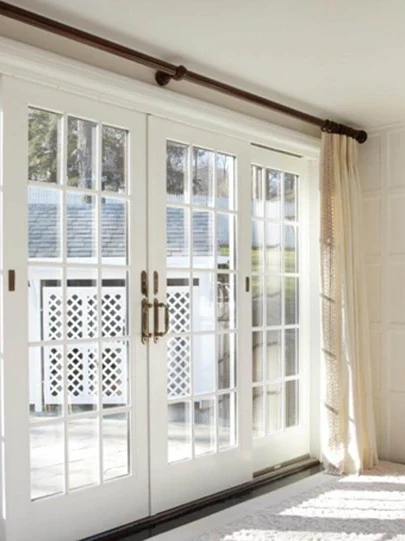In the realm of home improvement, the debate around window glazing options, particularly the choice between double and triple glazing, has been a topic of considerable discussion. With the increasing emphasis on energy efficiency, noise reduction, and overall home comfort, homeowners are more curious than ever about the benefits and potential drawbacks of upgrading to triple-glazed windows. This article delves into the intricacies of triple glazing, exploring its advantages, considerations, and whether it stands as a worthy investment for enhancing your living space.
Considering replacement windows?
Key Takeaways
- Triple glazing offers superior energy efficiency, significantly reducing heat loss through windows.
- It provides excellent noise reduction, making it ideal for homes in noisy areas.
- Improved security features and reduced condensation are notable benefits.
- The initial cost and installation challenges are important considerations.
- Its worth largely depends on geographical location, property value impact, and personal comfort.
Introduction to Triple Glazing
Triple glazing, as the name suggests, involves the use of three panes of glass within a single window frame, as opposed to the two panes found in double glazing. This additional pane of glass, along with the gas-filled spaces between them, serves to enhance the window’s insulation properties. The concept of triple glazing is not new but has gained prominence in recent years as homeowners seek more advanced solutions for energy conservation and comfort.
The evolution of triple glazing from its double-glazed predecessor marks a significant step in window technology. Initially popular in colder climates for its superior insulation capabilities, triple glazing is now considered a viable option for a wide range of environments, thanks to advancements in glass technology and frame materials.
Comparing triple to double glazing reveals a clear difference in performance. The key lies in the U-value, a measure of heat transfer through a material. Lower U-values indicate better insulation and triple-glazed windows typically boast significantly lower U-values than double-glazed ones.

The Benefits of Triple Glazing
Enhanced Energy Efficiency
One of the most compelling arguments for triple glazing is its ability to improve a home’s energy efficiency. By reducing heat loss through windows, triple glazing helps maintain a consistent indoor temperature, leading to lower heating costs during colder months. The table below highlights the difference in U-values between double and triple-glazed windows, illustrating the superior insulation properties of the latter.
| Window Type | Average U-value (W/m²K) |
| Double Glazing | 1.2 – 1.6 |
| Triple Glazing | 0.5 – 0.8 |
Reduction in Noise Pollution
For those living in busy urban areas or near noisy environments, triple glazing can significantly reduce the intrusion of external sounds. The additional pane of glass and the enhanced sealing technology work together to create a barrier against noise, offering a quieter and more peaceful living space.
Improved Home Security
The robust construction of triple-glazed windows, combined with their additional pane of glass, makes them more difficult to break through compared to their double-glazed counterparts. This added layer of security is a reassuring benefit for homeowners concerned about potential break-ins.
Condensation Reduction
Condensation on windows can be a nuisance, leading to dampness and potential mould growth. Triple glazing’s superior insulation properties help maintain a warmer internal glass surface, significantly reducing the likelihood of condensation forming.

Considerations and Potential Drawbacks
Cost Analysis
While the benefits of triple glazing are clear, the initial investment is higher than that of double glazing. The cost difference, however, should be weighed against the potential energy savings over time. The following table provides a comparative overview of the initial costs versus potential savings.
| Initial Cost Comparison | Energy Savings per Year |
| Double Glazing: Lower | Triple Glazing: Higher |
Installation Challenges
Upgrading to triple-glazed windows may present installation challenges, particularly in older homes where window frames may need reinforcement to support the additional weight. It’s crucial to consult with professionals to assess the feasibility and potential modifications required.
Aesthetic and Design Limitations
While modern triple-glazed windows come in a variety of styles, the thicker frames and additional panes can sometimes impose limitations on design flexibility. Homeowners should consider the aesthetic impact and ensure that the chosen windows complement the overall look of their property.
Is Triple Glazing Worth the Investment?
The decision to invest in triple glazing hinges on several factors, including the specific needs of your home, your geographical location, and your personal preferences for comfort and security. In regions with harsh winters, the energy-saving benefits and enhanced warmth provided by triple glazing can be particularly valuable. Additionally, for homes situated in noisy areas, the sound insulation properties of triple glazing can significantly improve the quality of life.
The impact on property value is another consideration. Homes equipped with triple-glazed windows may appeal more to energy-conscious buyers, potentially increasing resale value. However, the extent of this impact can vary and should be evaluated in the context of your local real estate market.
Ultimately, the worth of triple glazing is a subjective assessment, influenced by individual circumstances and priorities. While the upfront costs are higher, the long-term benefits in terms of energy savings, comfort, and security can make triple glazing a worthwhile investment for many homeowners.
Alternatives to Triple Glazing
While triple glazing offers numerous benefits, it’s not the only path to achieving energy efficiency and comfort in your home. For those weighing their options, here are some alternatives worth considering:
Double Glazing with Enhanced Features
Modern double-glazed windows now come with features that significantly improve their insulation and noise-reduction capabilities. Options such as low-emissivity (low-E) coatings and inert gas fillings (like argon) can enhance the thermal performance of double-glazed windows, making them a competitive alternative to triple-glazing.
Secondary Glazing Solutions
Secondary glazing involves adding an additional pane of glass or clear acrylic inside an existing single-glazed window. This can be a cost-effective alternative to full window replacement, offering improved thermal insulation and noise reduction without the need for major construction work.

Innovative Window Treatments
Window treatments, such as thermal curtains or blinds, can also play a significant role in improving a home’s energy efficiency. While not a substitute for high-quality glazing, these treatments can add an extra layer of insulation, reducing heat loss in winter and heat gain in summer.
FAQs
The U-value measures how well a window prevents heat from escaping a building. Lower U-values indicate better insulation properties, making triple-glazed windows with low U-values highly efficient at retaining heat and reducing energy costs.
Yes, triple glazing can lead to significant energy savings by improving the thermal efficiency of your home. By reducing heat loss, triple-glazed windows help maintain a consistent indoor temperature, decreasing the need for heating in winter and cooling in summer.
Triple-glazed windows are generally considered more secure than double-glazed ones due to their extra pane of glass and robust construction. This additional layer can deter break-ins and enhance the overall security of your home.
Triple glazing can significantly reduce the level of noise entering your home from outside. The extra pane of glass, along with the gas-filled spaces between panes, acts as an effective sound barrier, making triple glazing an excellent choice for homes in noisy areas.







